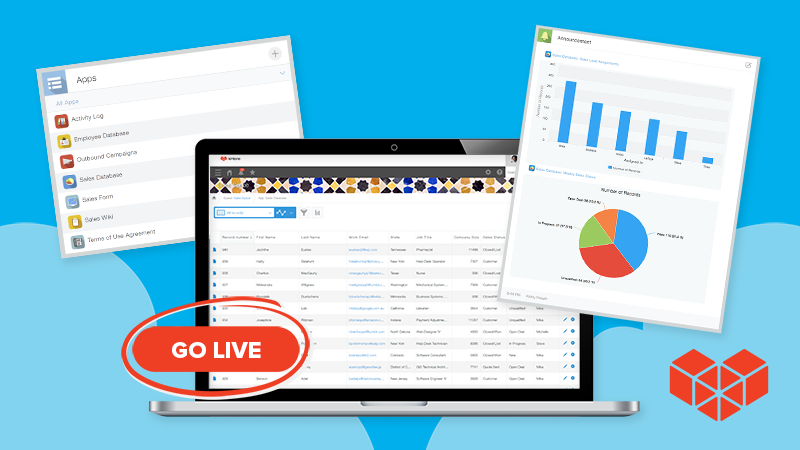Gone are the days where you must be in the office to do your job.
In 2018, 24 percent of employees reported doing some of their work remotely, up from 19 percent in 2003, according to Bureau of Labor Statistics data.
Globally, more than 50 percent of people who telecommute part-time said they wanted to work more hours remotely.
More companies are embracing remote work situations not only to give employees the freedom and flexibility to choose where they work, but to also reduce company costs while tapping into a larger pool of high-quality talent outside their geographic zone.
But working and leading teams across different time zones, cultures and languages comes with inherent challenges for collaborating on projects and motivating teams.
While online tools like Skype and Dropbox can help close the gap between virtual and physical offices, many typically only serve one purpose. This leaves teams with disconnected tools and a crowded desktop of multiple open windows, pings and chat boxes.
Recognizing these obstacles, Kintone's teamwork platform can help global teams stay united by:
1. Maintaining centralized, open lines of communication
Phone calls and video conferencing can be terrific assets for building personal connections, but juggling more than a couple chat tools can make communicating another job itself, not to mention headache-inducing.
Having one centralized platform for project management and business operations means team members only need to check one place for work messages, whether it's through a private message, comments on group post, department thread or attached to shared documents, tasks and workflows. In Kintone, all messages are archived and can be quickly located using our powerful search features.
It also makes it easier to give instant feedback -- an important part to make remote workers feel valued and to keep track of their progress.
ALSO READ: 10 Ways To Tell Your Team 'Good Job'
2. Automating a task-driven workflow
Managing projects and sharing documents via a trail of disconnected emails and spreadsheets can lead to mistakes and a lack of accountability.
Kintone's task-driven workflow solution allows dozens of team members across offices and time zones to simultaneously view and work on the same project from both desktop and mobile devices. And as a team leader, you won't have to micromanage your telecommuter's every move with Kintone's powerful auditing and reporting tools that display progress and hours worked with calendar views and real-time smart charts.
RELATED: 8 Ways Kintone Helps You Be The Best Project Manager For Any Job
Our Kintone team built a simple app to collect team members' weekly report recapping highlights and updates from their week. It's a valuable tool for building transparency, accountability and appreciation for everyone's hard work -- remote or not.
3. Building rapport and connecting to company culture
Physical distance can often leave remote workers out of inside jokes, personal sharing and other forms of bonding that are vital to forging a team.
A business application platform should be more than just a place for assigning and completing tasks, but a place that develops a collaborative digital environment -- an online version of the water cooler, if you will.
Our team uses Kintone to connect, regardless of geographic location, over personal triumphs, birthday wishes, children born, jokes or whatever else to authentically connect to one another. This social bonding “builds essential empathy, trust, and camaraderie,” says Keith Ferrazzi, the founder and CEO of Ferrazzi Greenlight. “What binds together virtual teams are the personal details.”
One way we do this at Kintone is by having every new employee post an "intro blog" to introduce themselves professionally as well as personally.
We also have a thread dedicated to office "chit chat" so our remote colleagues can feel connected to office culture even with a 17-hour timezone difference.
BONUS: Learn about creating a digital workplace for your team
Final Thoughts
Even with the rights tools, technology is no replacement for the people-centric approaches needed to lead and motivate teams in and outside of the office. Personal contact, honest feedback and concrete plans will trump even the most sophisticated technology.
“We have a tendency to overcompensate and approach remote workers and virtual teams as these mythical beasts,” says Mark Mortensen, an associate professor of Organizational Behavior at INSEAD. “But you shouldn’t think about them in a fundamentally different way. They are still people working in an organization to get stuff done. Treat them as such.”
While fancy tools are no replacement for solid leadership, Kintone was built with teamwork in mind.
About the Author
Nicole is Director of Marketing at Kintone, with 10+ years experience in content strategy, campaign management, lead acquisition and building positive work cultures of empowered, purpose-driven team members. She spent seven years as a journalist, previously serving as a CBS San Francisco digital producer, NPR contributor, Patagon Journal deputy editor and reporter for several publications, including the Chicago Tribune. She's passionate about the tech for good space, social entrepreneurship and women leadership. On the weekends, you’ll likely find her putting her Master Gardener skills to use in at community gardens in Oakland.











